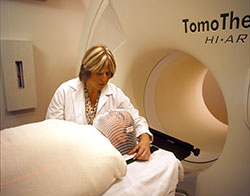Benefits of radiotherapy outweigh small increased risk of second cancer
The proportion of second cancers related to radiotherapy treatment for the first cancer in adulthood is small (about 8%), concludes an article published in The Lancet Oncology.

The findings, from the first study to quantify the risk from routine radiation therapy for multiple first cancers (see Note), suggest that most second cancers are due to other factors such as lifestyle and genetics.
With improvements in cancer survival, determining the long-term risks from treatments such as radiotherapy has become important. It is well established that radiotherapy treatment is associated with a risk of developing a second cancer, but until now, what proportion of second cancers might be related to radiotherapy was not known.
Read the whole article at ecancermedicalscience
Note
- 15 solid cancer sites that are routinely treated with radiotherapy were analysed—oral and pharynx, salivary gland, rectum, anus, larynx, lung, soft tissue, female breast, cervix, endometrial, prostate, testes, eye and orbit, brain and CNS, and thyroid.
Reference
- de Gonzalez, A. B., Curtis, R. E., et al. (2011). Proportion of second cancers attributable to radiotherapy treatment in adults: a cohort study in the US SEER cancer registries The Lancet Oncology DOI: 10.1016/S1470-2045(11)70061-4
Keywords: radiation therapy, secondary cancer
30. 3. 2011 ecancermedicalscience



